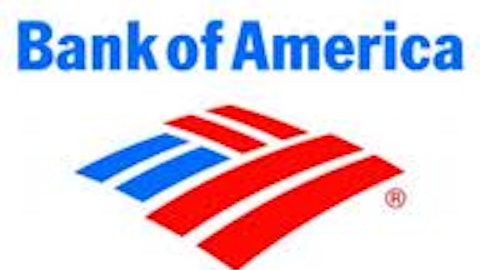The government’s strict regulation of banks provides both a blessing and a curse. On the plus side, regulation helps prevent corrupt practices that undercut honest banks and take advantage of customers. On the other hand, such regulation dramatically increase banks’ expenses. Increased expenses harm banks through decreased profits, and more regulation harms customers when prices increase.
Here are two ways that regulation is shaking up the banking sector.
1. Loans for the little guy
Take for instance a recent college graduate drowning in student loans and living pay check to pay check. The student must pay rent but doesn’t get paid for another week. It’s a terrible bind. However, many banks offer a solution – deposit advance loans.
Deposit advance loans function as a line of credit tied to a direct deposit such as a paycheck. After a customer asks for an advance, the bank takes that amount plus a fee from the next direct deposit. The loans are easy to acquire since there is no application.
They are also appealing because the bank deposits the money immediately into the customer’s checking account. These helpful tools, to both the bank and consumers, may become a thing of the past as regulators push for restrictive rules. The government is considering eliminating deposit advance loans altogether.

Deposit advance loans provide a steady revenue stream from the average 120% interest customers pay. Without these loans, Wells Fargo & Co (NYSE:WFC)’s revenue from its customer credit and installment segment will surely suffer.
Among a handful of other deposit advance loan providers, U.S. Bancorp (NYSE:USB) also butts heads with regulators. It explained that the new regulations would make loans more expensive and intricate. Bancorp’s ability to provide these loans would be restricted due to the increased costs and complexity.
Though banks do not disclose how many of these loans they make or how profitable they are, we can still understand how U.S. Bancorp (NYSE:USB)will be harmed. It stands to lose customers who use these loans. This would eliminate the revenue stream from the interest payments. Additionally, many of these customers have other banking products such as checking accounts and mortgages. As these customers leave, U.S. Bancorp would lose revenue streams from the other products.
Despite the high interest rate, demand for these loans exists. This past May, customers and employees gathered in Los Angeles outside the Consumer Financial Protection Bureau. The demonstration represented their desire for the deposit advance loans’ continued existence.
2. Fighting off online thieves
Forget the ski masks, guns, and getaway car. All you need now to rob a bank is a computer and excellent IT / hacking skills. Banks face the threat of hackers from all walks of life: individual thieves, criminal gangs, and even foreign governments. These threats have led U.S. regulators to call for tightened bank security.
The regulators insist that banks must take personal responsibility for cyber-attack protection. Though the government plans war games to help banks practice to defend against cyber-attacks, the firms must pay for increased security on their own.
This past March, JPMorgan Chase & Co. (NYSE:JPM) faced a hacking incident that shut down its online banking system preventing many customers from accessing their accounts. And just last fall, Iranian hackers compromised Citigroup Inc. (NYSE:C)‘ high security computer systems. These events were only a couple among a series of incidents faced by JPMorgan Chase, Citi, and Bank of America Corp (NYSE:BAC), since 2011.
All of these attacks have already proven costly for banks. Circumstances cost the banks sales during the hours their systems were compromised; they lost their customers’ faith in “bank-level security;” and the banks spent significant sums in repairs. Bulge bracket banks, such as JPMorgan Chase & Co. (NYSE:JPM), already pay security expenses that increase 7% to 9% every year. Spending more on security would hamper profit margins even further, especially during a time when net interest margins, the spread between which banks can borrow and lend, are so slim.
JPMorgan Chase & Co. (NYSE:JPM) analysts estimate the average return on equity will decrease from the current 15% to 9.6% by 2015 mostly because of new regulation. As these attacks shake consumer confidence and as higher regulation threaten profits, banks face some tough challenges.
Conclusion
Increased regulation forces banks to increase expenses and sometimes lose revenue, as they may need to sell off or close down a profitable business unit. Additionally, customers suffer as they lose certain services while also paying more for others in order to make up the difference. As consumers, we must see how this could leave us underserved.
Whichever way you slice it, increased regulations spell hard times for banks and customers alike.
This article was written by Michele Milheim and edited by Chris Marasco. Chris Marasco is the Head Editor of ADifferentAngle. Neither has a position in any of the stocks mentioned. The Motley Fool recommends Wells Fargo. The Motley Fool owns shares of JPMorgan Chase & Co (NYSE:JPM). and Wells Fargo.
The article Increased Regulation Harms Big Bank Bottom-Lines and You originally appeared on Fool.com.
Copyright © 1995 – 2013 The Motley Fool, LLC. All rights reserved. The Motley Fool has a disclosure policy.



